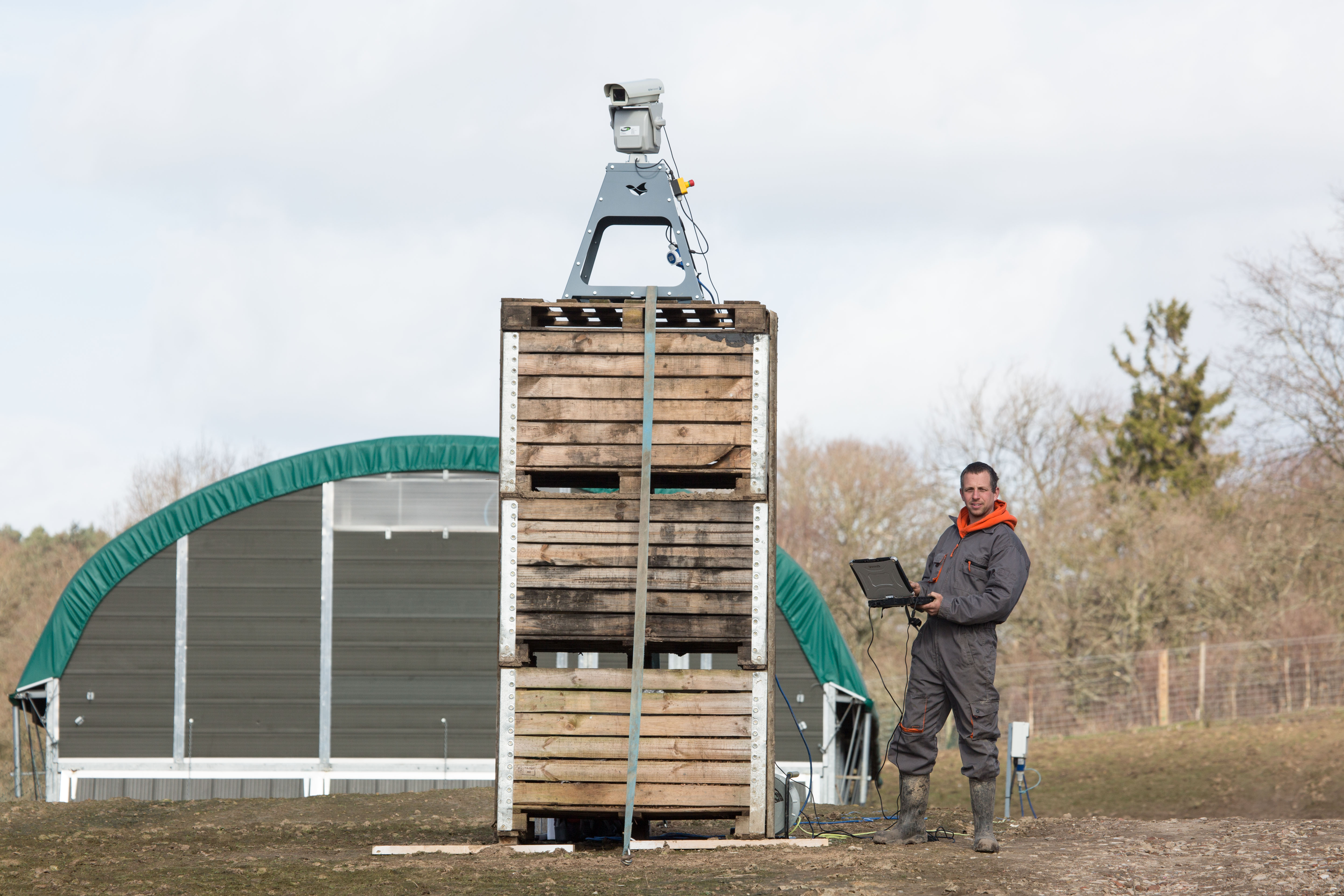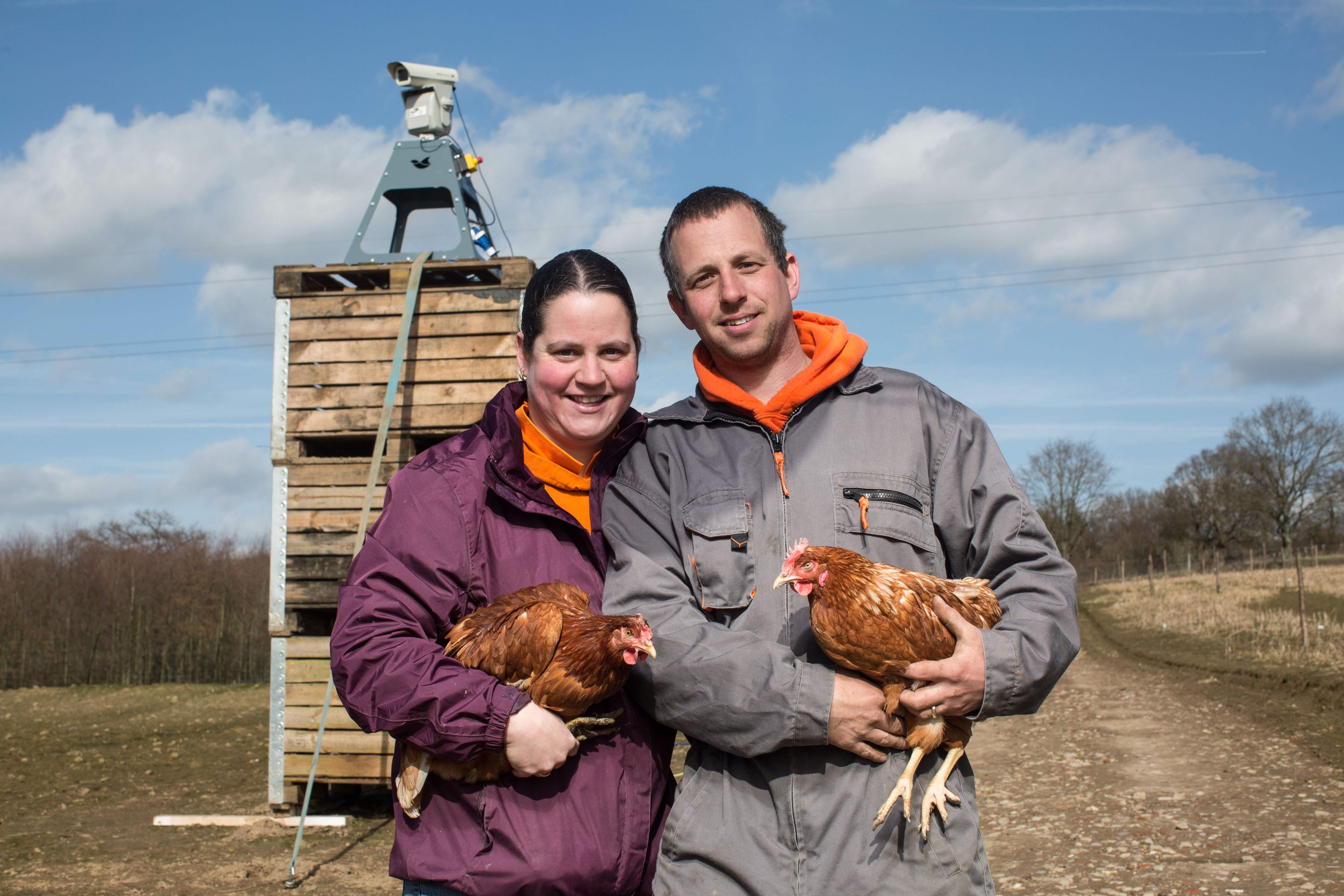



A laser-like focus on disease prevention
Biosecurity measures are integral to the prevention of avian influenza and other avian diseases, and poultry farmers must remain vigilant and take all necessary steps to ensure their flocks remain clear of the virusOn top of taking all the necessary biosecurity measures, farmers are also looking at extra ways of protecting their flocks, including the use of lasers to try and keep wild birds at bay.
Last year, an outdoor organic poultry unit in East Sussex leased laser technology developed by a Dutch company to scare off other birds from mixing among their laying hens. The system made a huge difference at Orchard Eggs, run by Dutch husband-and-wife team, Daniel and Karen Hoeberichts, who keep 4,500 hens outdoors on their farm near East Grinstead. They leased the lasers at a cost of £500 per month for a three-month period from UK distributors PestFix (UK) and noticed a significant difference.

The farm is not currently using the lasers but with all the recent confirmed cases of bird flu in the UK and Ireland, Daniel is seriously considering using them again soon.
“The lasers are expensive at £500 per month but they did work for us,” he says. “If they prevent birds from landing among our hens then they are surely worth it. Selling the eggs from our hens is our livelihood and if there was a case of bird flu within the flock then that’s the end of our income.”
Daniel was the first poultry farmer in the UK to set up the laser system in a bid to keep other birds away. His farm in East Sussex is not on any wild bird migratory route but he was having problems with pigeons, magpies and other local species, any of which could also carry the bird flu virus.
“We leased the system for three months after careful consideration,” says Daniel. “It took a few days for us to notice any results but after that we really did witness a lot less birds around.
“Crows, jackdaws and pigeons were a problem for us and were regularly landing in our grounds. However, the lasers did keep them at bay all except for the magpies which seemed to get used to the laser beams.”
At Orchard Eggs the hens roam freely around 50 acres of orchards and have access to moveable houses within the grounds when they need it. Neighbours of Daniel’s also witnessed a reduction of birds landing, particularly one who is a keen gardener.
“We saw a 90 percent reduction in the other birds landing on our site,” says Daniel. “The lasers, although not a guaranteed insurance against bird flu, gave us the feeling of security and peace of mind that we were being proactive in defending our flock.
“Close to our farm is a neighbour who grows a lot of fruit and vegetables. He also noticed a big difference when the lasers were installed. Sadly, he also noticed a huge difference when the lasers were taken away again as the birds returned and destroyed some of his crops.
“We are watching the current developments regarding bird flu cases very closely,” adds Daniel. “If the situation of outbreaks becomes worse we will consider setting up the lasers again.
“Last year we were receiving calls from Asia, America and Africa asking us how effective the system was. It’s certainly not cheap but was effective in our situation.”
According to the technology’s developers, the principle of repelling birds with a laser beam was inspired by nature. The birds think the approaching laser beam is a physical object; they go into survival mode and fly away.

The automated laser is an innovative method of repelling unwanted wild birds without causing harm to them, the chickens and the surrounding environment. The system has been developed by the Dutch company Bird Control Group, in cooperation with the Delft University of Technology in the Netherlands.
The laser is silent and shows effectiveness of 90 to 100 percent in bird dispersal at farms, which the company says makes it a viable alternative to the expensive method of installing nets all around the entire poultry farm.
Steinar Henskes, CEO of Bird Control Group, is pleased his company’s automated technology is helping poultry farmers defend their business across the world
He says: “I believe we can help companies in the poultry sector to prevent conflicts with birds. We noticed the entire value chain has problems with birds – from the large poultry farms who want to keep wild birds away to prevent avian flu to the processing sites and packaging companies which face health-and-safety issues caused by wild birds.
“In 2016 and 2017 we completed early trials and first installations at poultry farms. We are pleased that the automated laser technology has been adopted by first movers in both the United States and Europe.
“We admire the innovative ways poultry farms defend their business from the risk of avian flu and we are happy to be part of the final line of defence.”
Dan England, director of distributors PestFix (UK) says: “We are also continuing to monitor the bird flu outbreaks and where they are being detected. Our company maintains communications with farmers in how the lasers can help keep unwanted birds at bay by sending out information on our products via mailshots and online.
He adds: “There are a few new developments within the lasers such as longer ranges and brighter beams that will help poultry farmers protect their flocks even more.”
This article was originally published in the March 2018 issue of our e-magazine, Poultry Digital








